Bathroom tiles have become statement pieces in their own right, moving far beyond basic function into the realm of mood-setting, problem-solving design. This year’s most inspiring bathroom tile ideas celebrate scale, texture, sustainability, color, and smart technology—giving renovators countless ways to match personal style with practical performance. From seamless porcelain slabs that shrink cleaning time to recycled mosaics that tread lightly on the planet, each of the following concepts delivers a fresh perspective along with simple tips you can act on today.
1. Large-Format Porcelain Tile Opens Up Tight Spaces
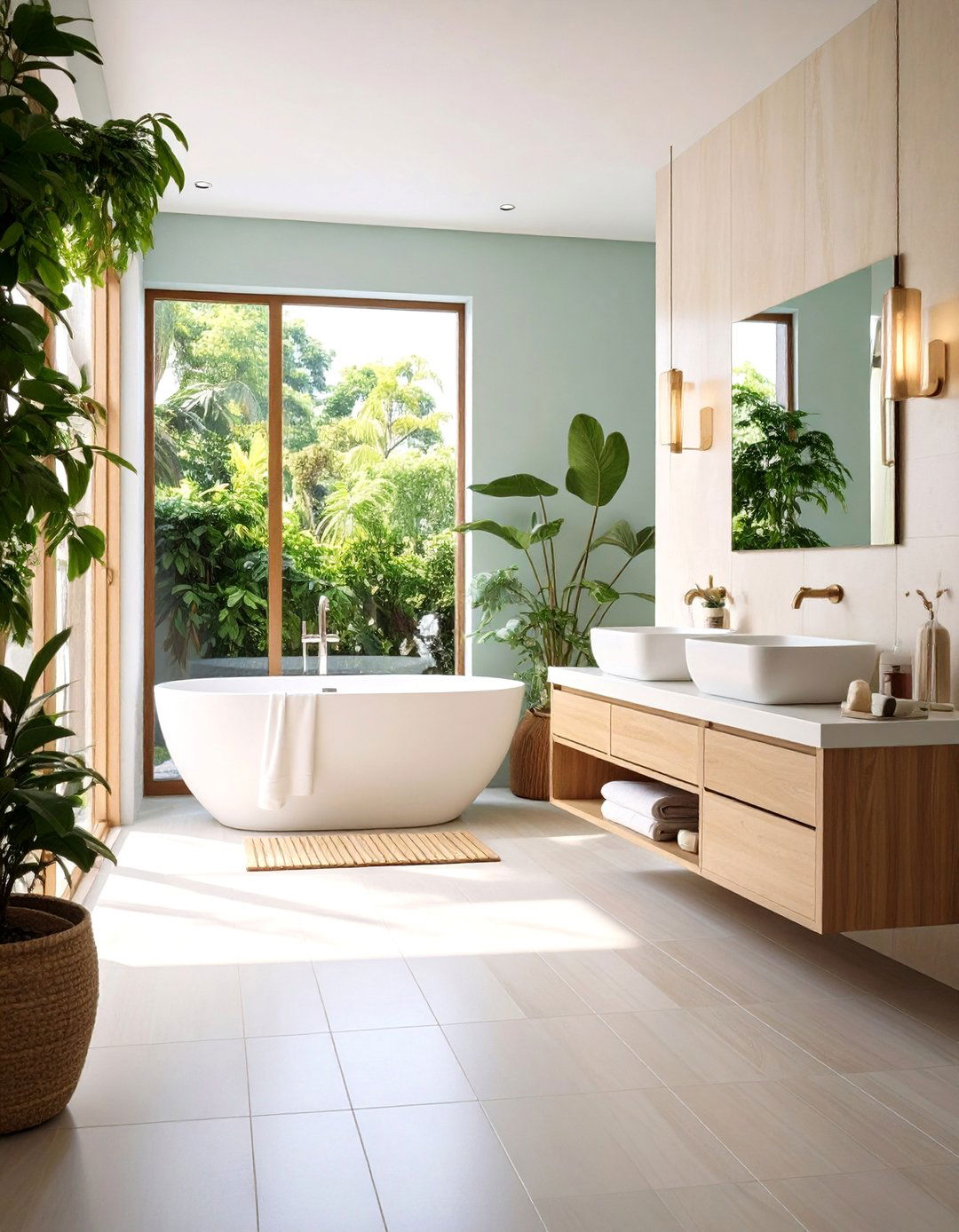
A single oversized porcelain bathroom tile instantly calms visual clutter, because fewer grout lines mean fewer seams to catch the eye and less scrubbing later. Modern manufacturing now produces slabs exceeding 120 × 240 cm that can cloak walls, floors, and even shower niches in one unbroken sweep, creating a luxe, spa-like vibe while disguising small room footprints. Slip-rated matte finishes make them safe underfoot, and rectified edges keep joints razor-thin for a near-monolithic look. If full slabs exceed your budget, choose 12 × 24-inch pieces laid vertically to mimic the effect on a modest scale.
2. Herringbone Tile Layout Adds Movement and Height
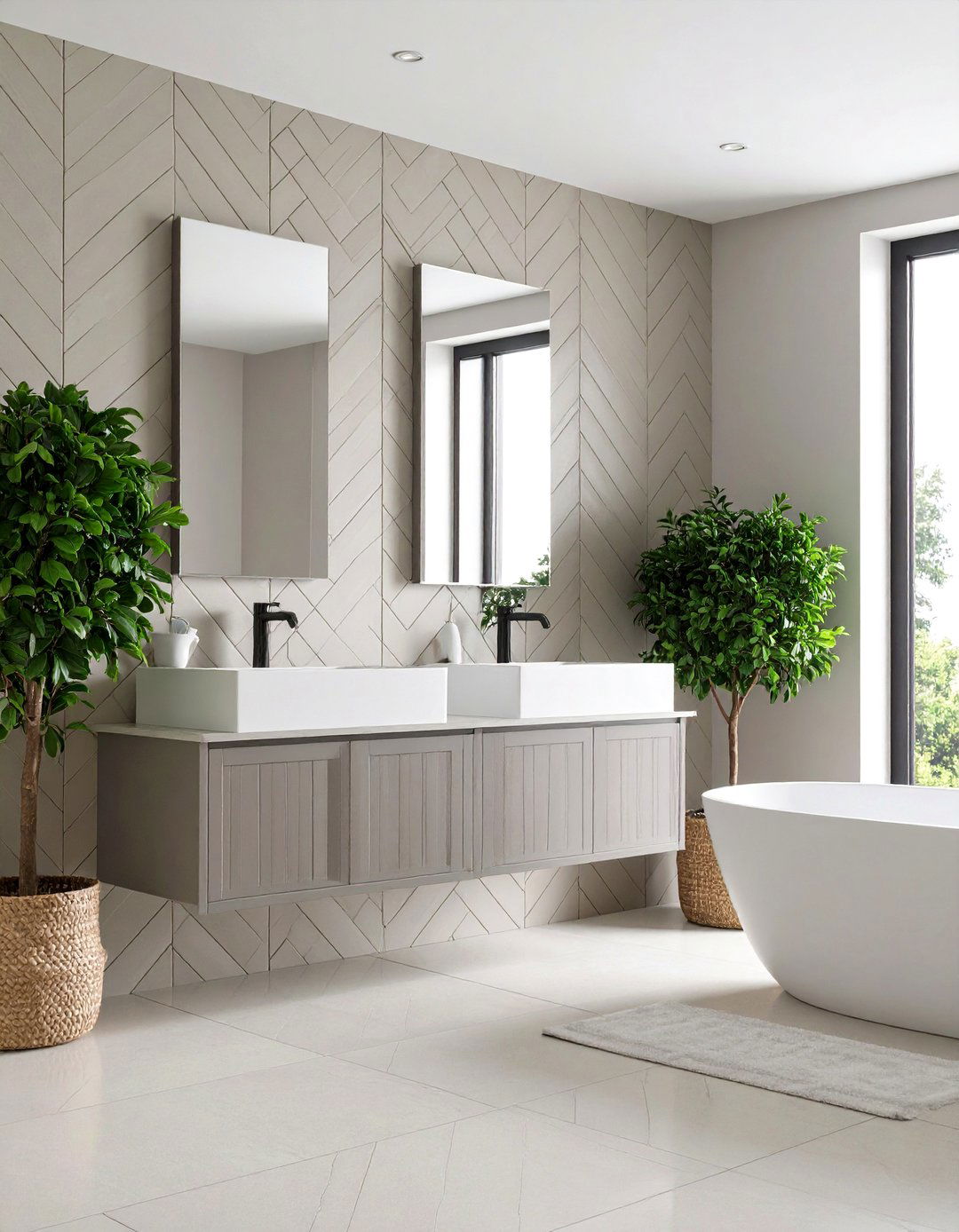
The classic herringbone pattern gives narrow bathrooms an instant lift because its V-shaped arrows pull the eye upward and outward. This year designers are swapping the usual 3 × 6 subway shapes for slender 2 × 8 porcelain “sticks,” which exaggerate the zig-zag and make walls feel taller. Keep tones neutral—think bone or soft greige—to let the layout, not color, steal the show; then ground the look with matching grout so the motif stays elegant rather than busy. Pair a herringbone shower surround with a plain large-format floor to balance pattern and calm.
3. Graphic Cement Tiles Bring Instant Personality
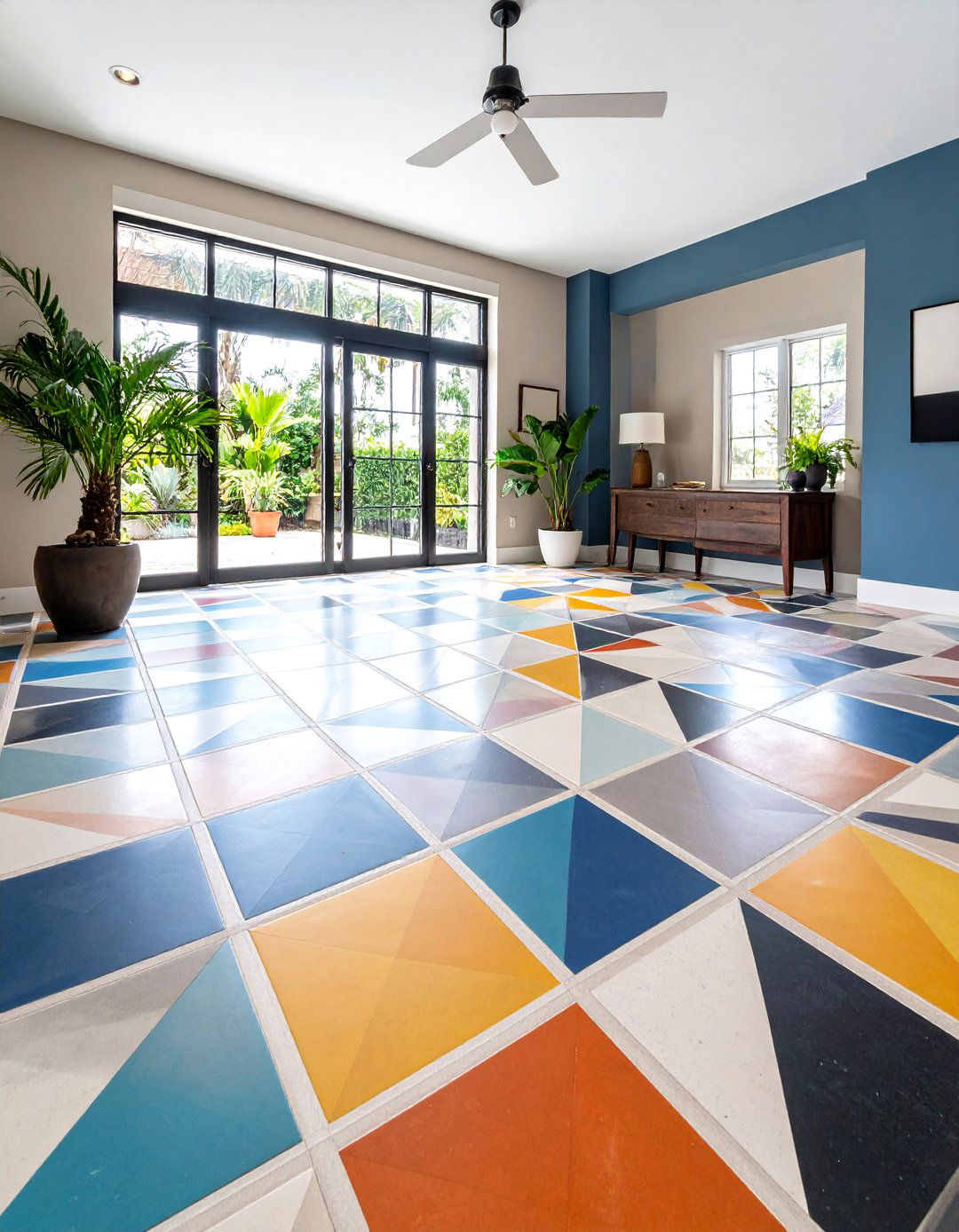
Bold, encaustic-style cement bathroom tiles now arrive pre-sealed, meaning the once-daunting upkeep is largely gone while color saturation remains intense. Oversized geometrics—chevrons, stars, and mid-century circles—anchor powder-room floors where a single box can create a “rug” effect. For longevity, keep walls simple and repeat one accent hue in towels or a vanity to harmonize the look. Remember that cement needs a flexible, waterproof adhesive in wet zones and periodic beeswax top-ups to deepen patina over time, rewarding you with a floor that ages gracefully rather than dating quickly.
4. Marble-Look Porcelain Delivers Luxury Without Maintenance

If you love dramatic veining but dislike etching and sealing, today’s ink-jet porcelain convincingly mimics Calacatta or Arabescato marble while shrugging off stains. Non-porous composition resists water rings and hair-dye mishaps, and rectified edges allow ultra-narrow joints that heighten the illusion of a solid stone slab. Choose large, book-matched panels for niche walls, then cut leftover pieces into trim to keep waste—and cost—low. Soft-touch matte glazes also boost slip resistance without dulling the marble sheen, giving you stress-free opulence in family bathrooms.
5. Wood-Effect Tiles Create a Spa Ambience
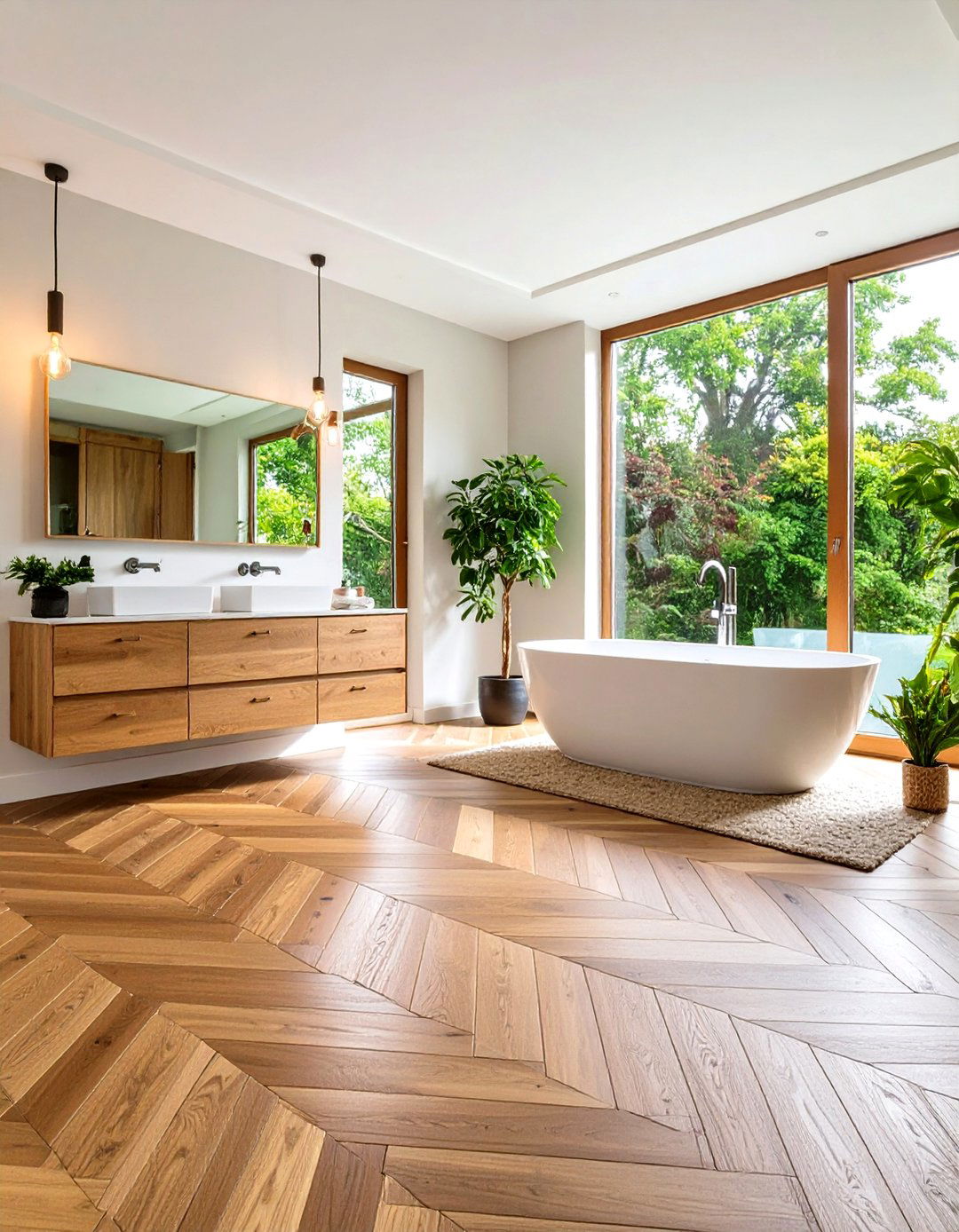
Warm wood grains instantly relax the senses, yet real timber swells in humidity. Enter wood-effect porcelain bathroom tile: kiln-fired planks with life-like knots, compatible with under-floor heating and utterly waterproof. Lay them in a chevron or staggered pattern for realistic floorboards, or run them up the tub apron to unify vertical and horizontal planes. Designers love earth-tone grout that vanishes between planks, heightening authenticity. Combine with cream walls and greenery for a Nordic-spa feel that’s easy to mop.
6. Recycled-Glass Mosaic Tiles Champion Sustainability
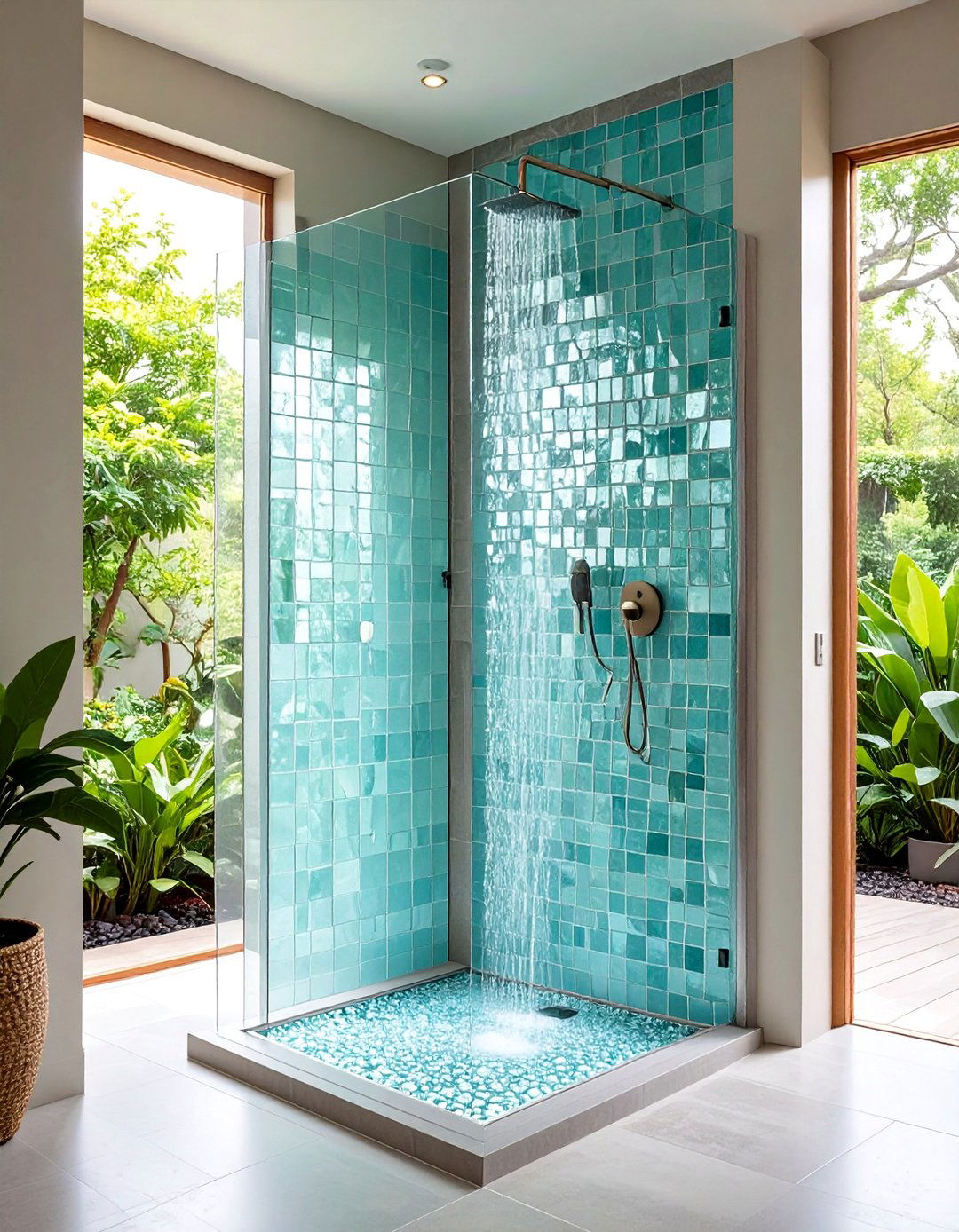
Tiny shards from beverage bottles and windscreens are reborn as gleaming recycled-glass mosaic bathroom tiles, diverting waste from landfill and qualifying for green-building credits. Their glossy surfaces bounce light around dim rooms, while rounded edges feel gentle under bare feet. Because glass is naturally non-porous, soap scum wipes off with vinegar and microfiber. Install contrasting grout—think pale aqua glass with fog-grey joints—to highlight each tessera and hide inevitable mildew between cleanings. Reserve these mosaics for shower floors or feature bands, stretching a pricier eco-material further.
7. Penny Rounds Offer Playful Curves and Extra Grip
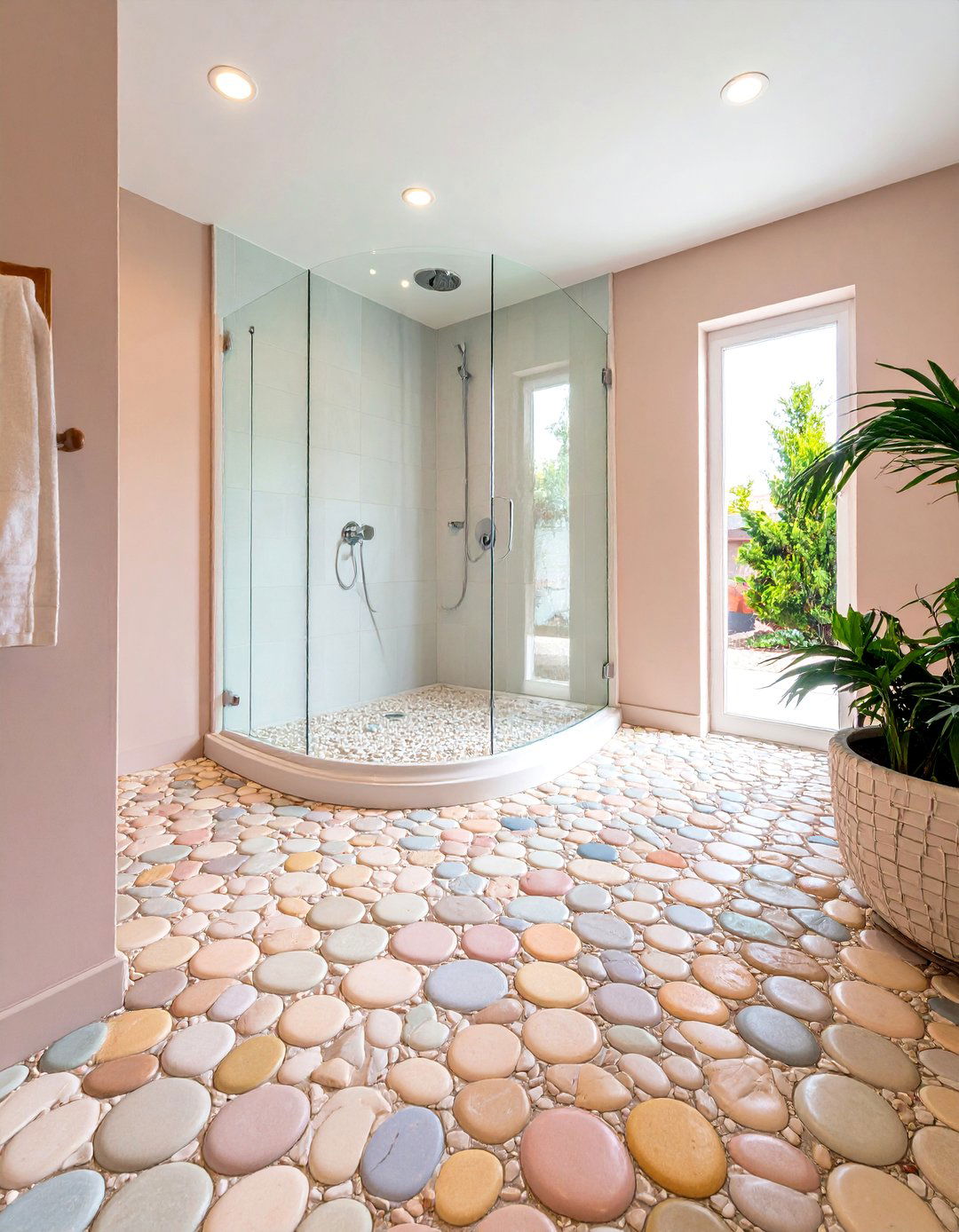
Those coin-sized circles your grandparents loved are resurging, now in matte pastels, ombré blends, and metallic finishes. Their dense field of grout joints earns high slip-resistance ratings, making penny bathroom tile brilliant underfoot in walk-in showers. Use a contrasting color on niche backs to frame toiletries like artwork, or run a vertical stripe behind the faucet for a boutique-hotel nod. Seal unglazed clay versions to prevent staining, and choose epoxy grout so curved edges stay crisp over time.
8. Matte-Black Subway Tiles Deliver Industrial Chic
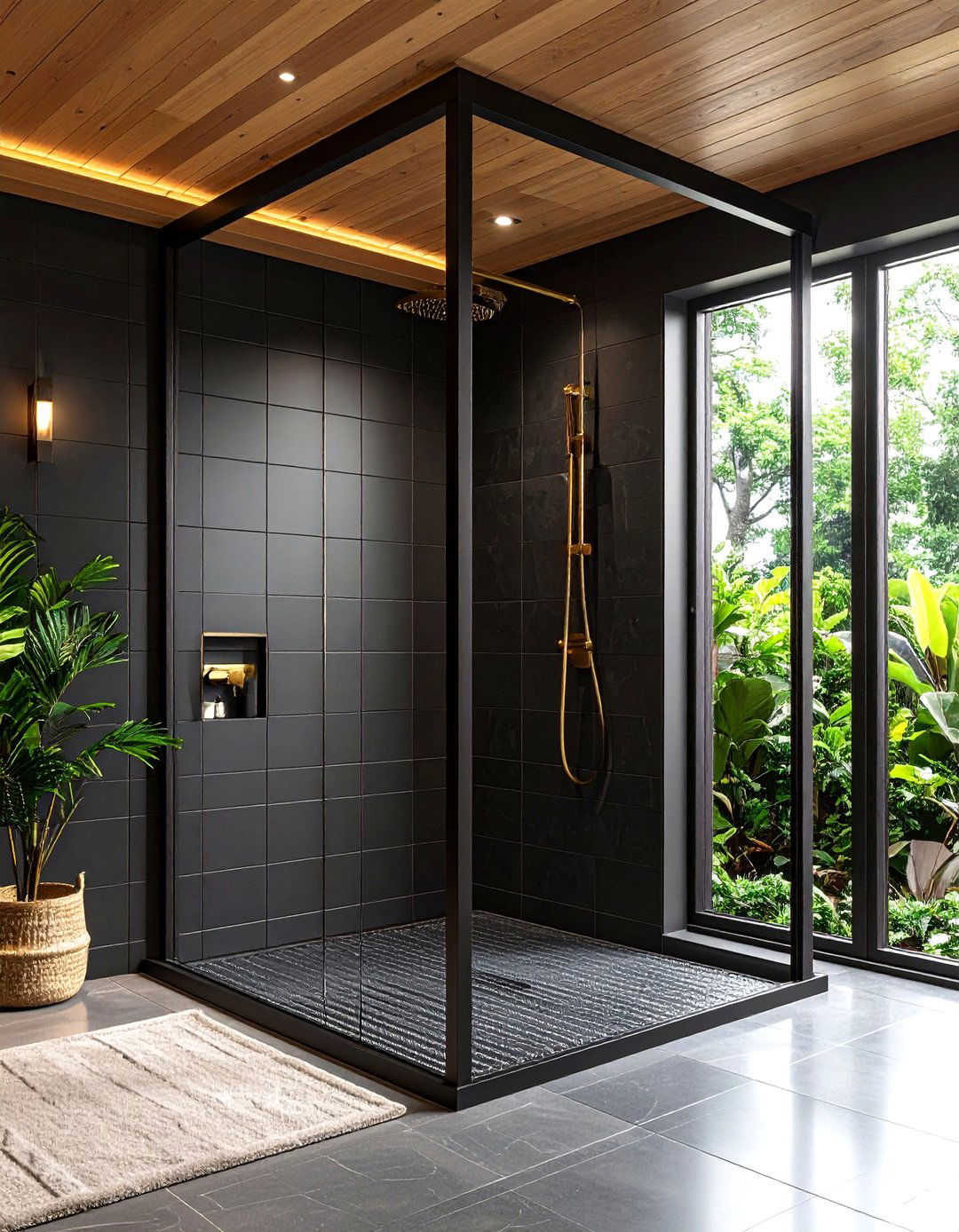
Swapping glossy white for matte-black subway bathroom tile instantly modernizes a bland enclosure. The soot-toned glaze absorbs light, so pair it with ample LEDs or a skylight to avoid gloom. For maximum drama, run tiles to the ceiling and finish edges with slim black metal trims. Dark surfaces also camouflage water spots between cleans, while rectified options allow a tidy 1.5 mm grout line. Balance the depth with brushed-gold taps or walnut accessories to warm the scheme.
9. Hexagon Tile Floors Add Geometric Flair
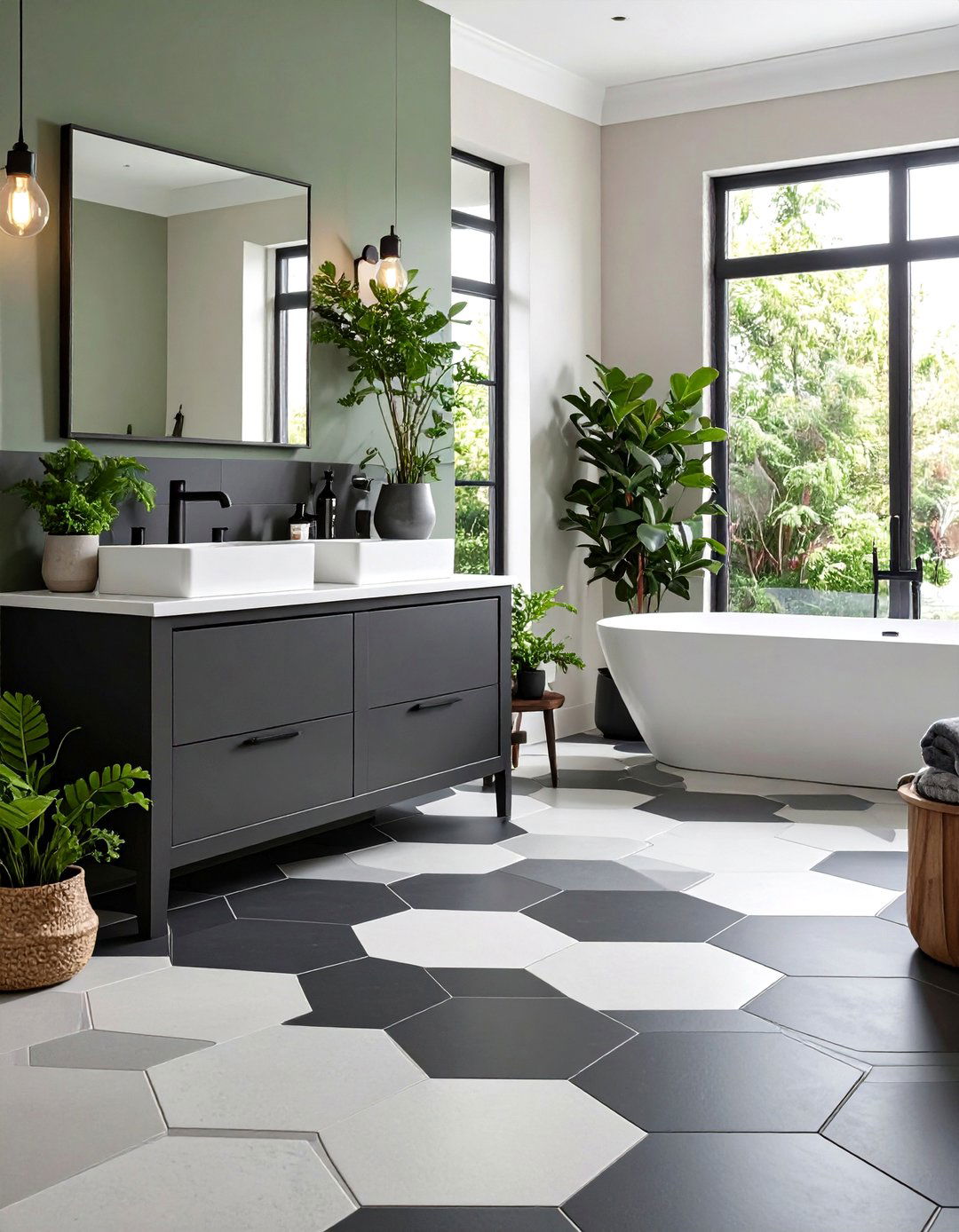
Honeycomb bathroom tiles retain vintage charm yet feel fresh when scaled up to 6 or even 8 inches across. Larger formats mean faster installation and an illusion of more floor space, while mixed-size “confetti” layouts bring movement underfoot. Stick to two related tones—say, charcoal and dove—to keep the graphic pattern coherent. If your room is narrow, aim the flat sides toward the long wall to visually widen the footprint.
10. Mixed-Material Mosaic Borders Tie Themes Together
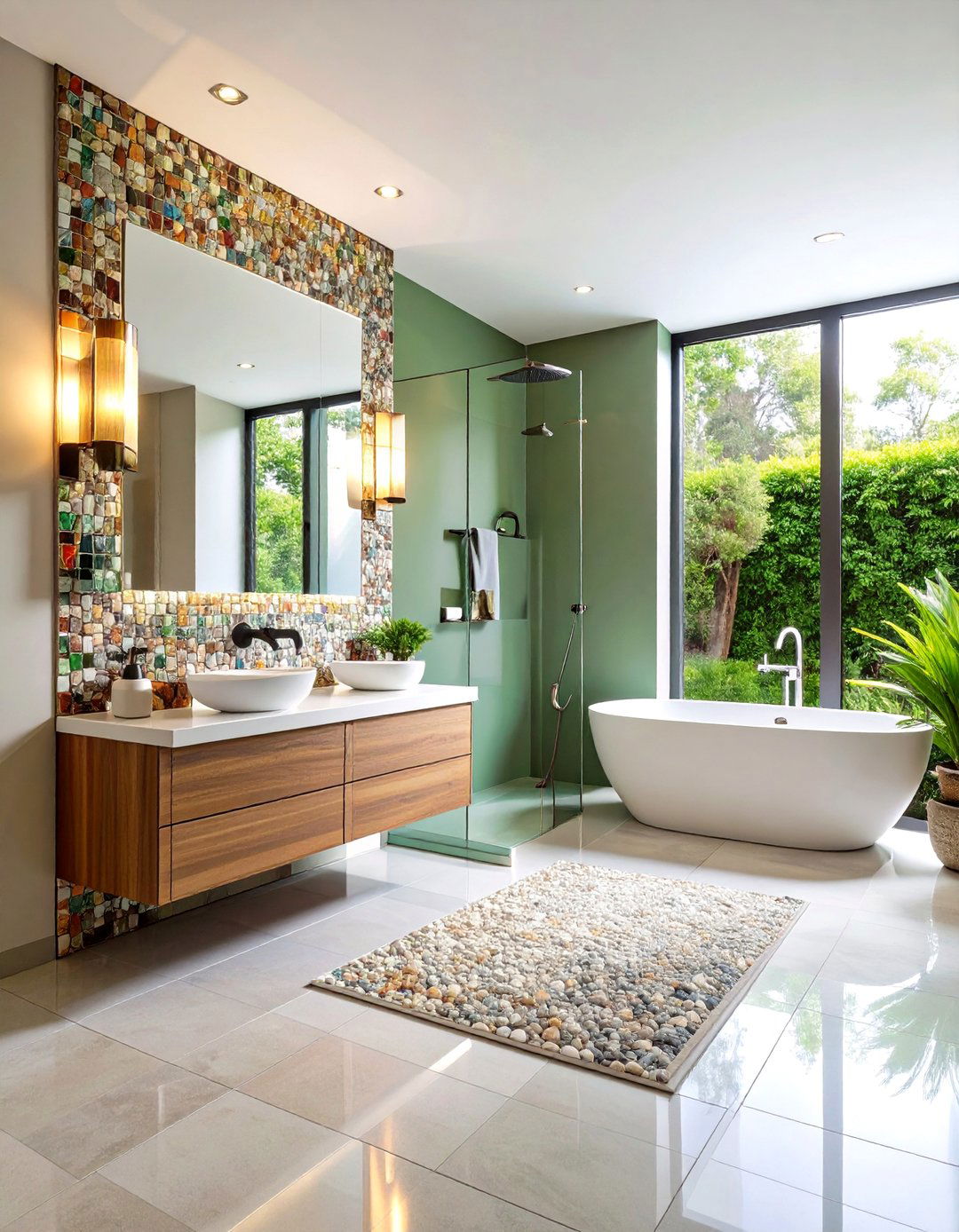
Pairing stone, glass, and metal chips in a slim mosaic border lets you echo every finish in the room without overwhelming the eye. Position the band at eye level around the perimeter or align it with the top of a recessed shelf so the line continues unbroken. Keep surrounding field tiles plain; the border’s sparkle will read like jewelry rather than clutter. Many sheets come on flexible mesh you can snip to wrap inside corners cleanly.
11. Terrazzo-Effect Tiles Offer Subtle Color Confetti

Today’s terrazzo-look porcelain scatters flecks of blush, ochre, or sage against creamy bases, echoing mid-century terrazzo without the heavy pour or polish. Because pigments are baked into the glaze, colors stay vibrant, and rectified edges let you achieve nearly seamless fields so speckles read continuously across the floor and up the wall. Add brass profiles or terrazzo soap dishes to reinforce the motif without excess pattern.
12. Pastel Zellige Tiles Provide Handcrafted Sparkle
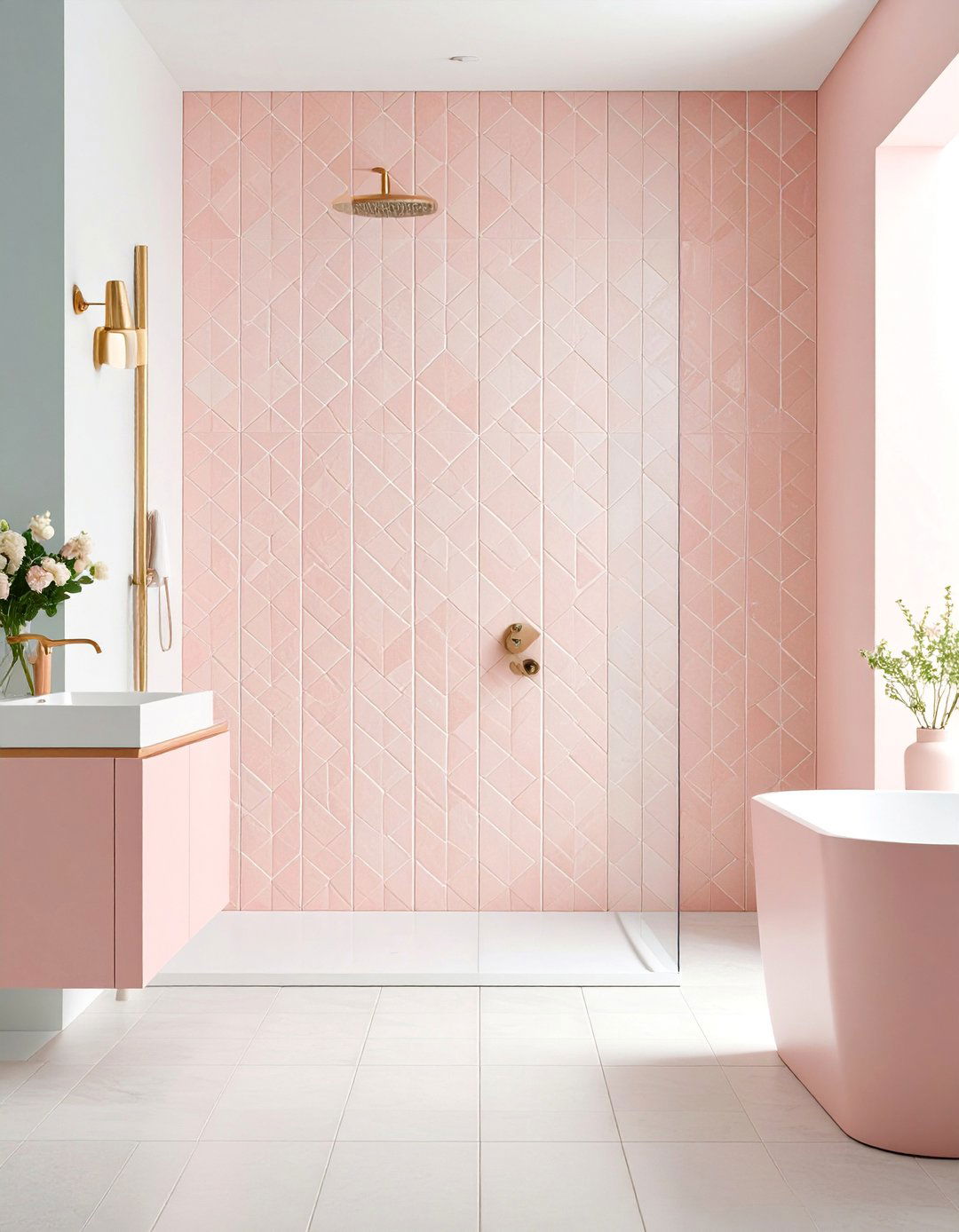
Hand-cut Moroccan zellige bathroom tiles shimmer thanks to uneven surfaces that catch light like rippling water. New 2025 palettes lean toward sorbet shades—sea-salt mint, blush, and apricot—that soften the rustic edges. Because tiles vary in thickness, use a wide-notch trowel and back-butter each piece for a flat finish. Lay them tight with minimal grout for an authentic look, then let the subtle color variation create depth without added pattern.
13. Textured, Slip-Resistant Shower Floors Boost Safety

Texture equals traction. Choose porcelain bathroom tile stamped with linen, sand, or micro-pebble textures and certified to a ≥0.42 wet DCOF rating so bare feet feel secure. Smaller 2 × 2 mosaics add even more bite through extra grout lines, yet smart epoxy grouts now resist mold growth and harsh cleaners. Offset tactile floors with smoother wall tiles in the same hue to keep cleaning easy while maintaining a coordinated palette.
14. Checkerboard Patterns Return With Fresh Palettes

The chessboard bathroom tile isn’t just black-and-white anymore; sage-and-cream, mocha-and-oat, or indigo-and-linen pairings feel current while retaining timeless geometry. Lay squares on the diagonal to elongate short rooms, or restrict the pattern to the floor so fixtures stand out crisply. A matte glaze keeps glare down and hides water spots, while using low-contrast grout streamlines maintenance.
15. Wave-Pattern 3D Tiles Introduce Subtle Movement
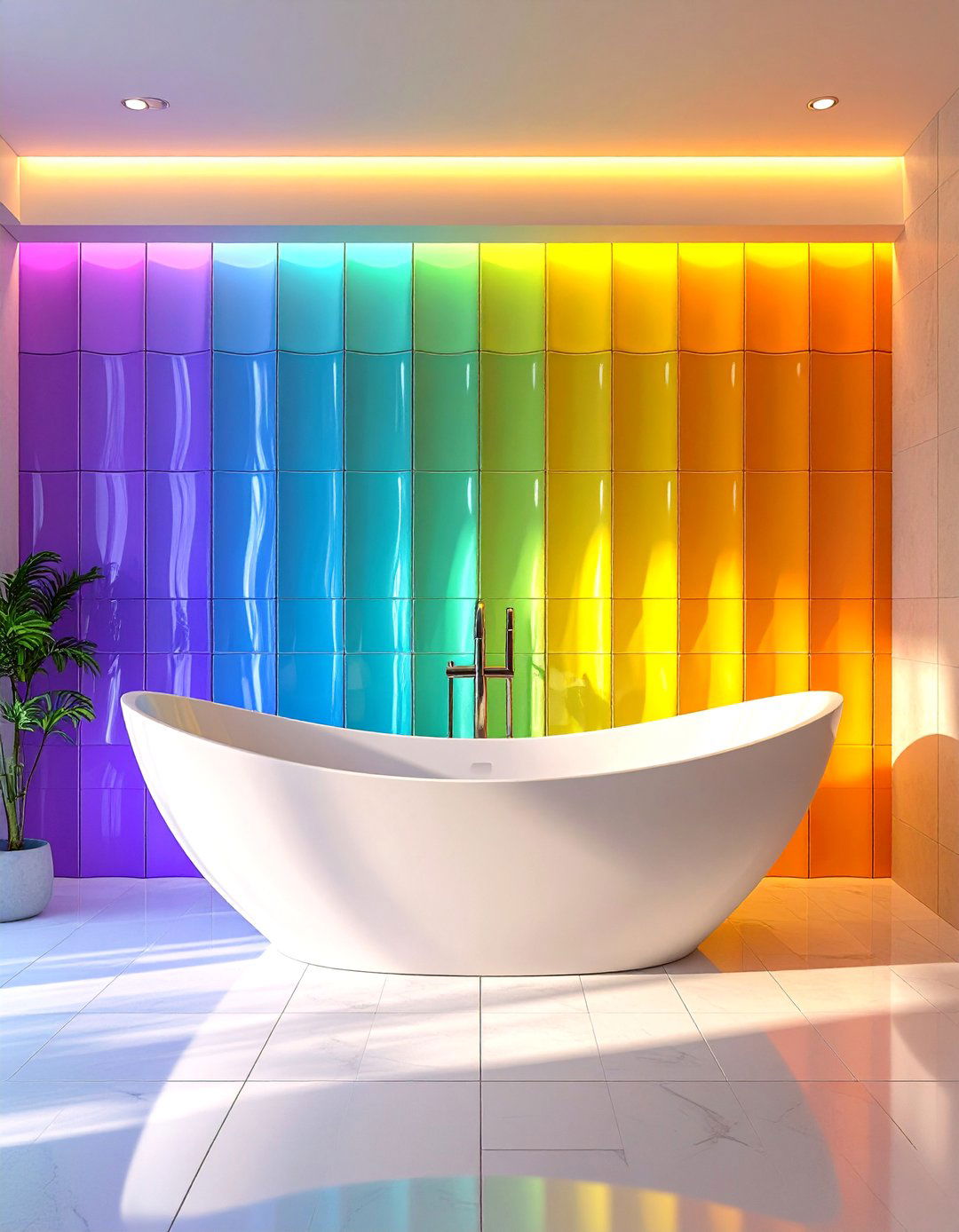
Gently undulating, three-dimensional bathroom tiles cast soft shadows that shift with daylight, giving walls a kinetic, spa-like energy. Install them on a single focal wall—often behind the tub—to avoid overpowering small rooms. Because ridges create extra surface area, always use high-bond polymer mortar and back-comb the tile for full coverage. Complement with concealed strip lighting at ceiling level to dramatize the relief after sundown.
16. Floor-to-Ceiling Slab Tiles Chase Minimalist Drama
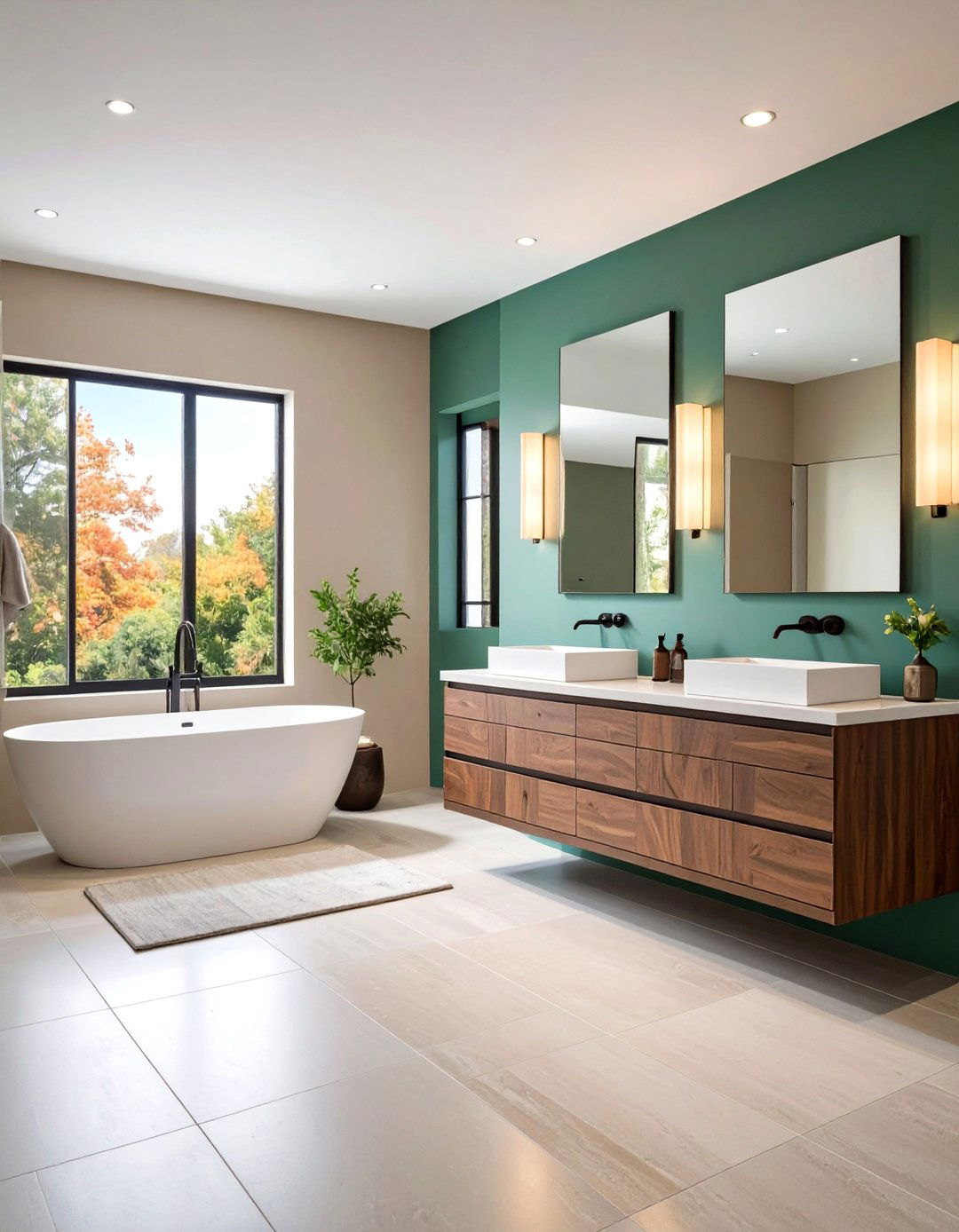
Running identical slabs from floor through walls and even vanity fronts erases visual breaks, turning your bathroom tile into an architectural skin. Continuous veining fools the eye into thinking the space is larger and more expensive than it is. Choose a neutral tone and let fixtures provide contrast; wall-hung toilets and floating sinks emphasize the monolithic envelope. Fine-line epoxy grout in a matching shade finishes the illusion.
17. Art-Deco Fan Tiles Give Vintage Glamour
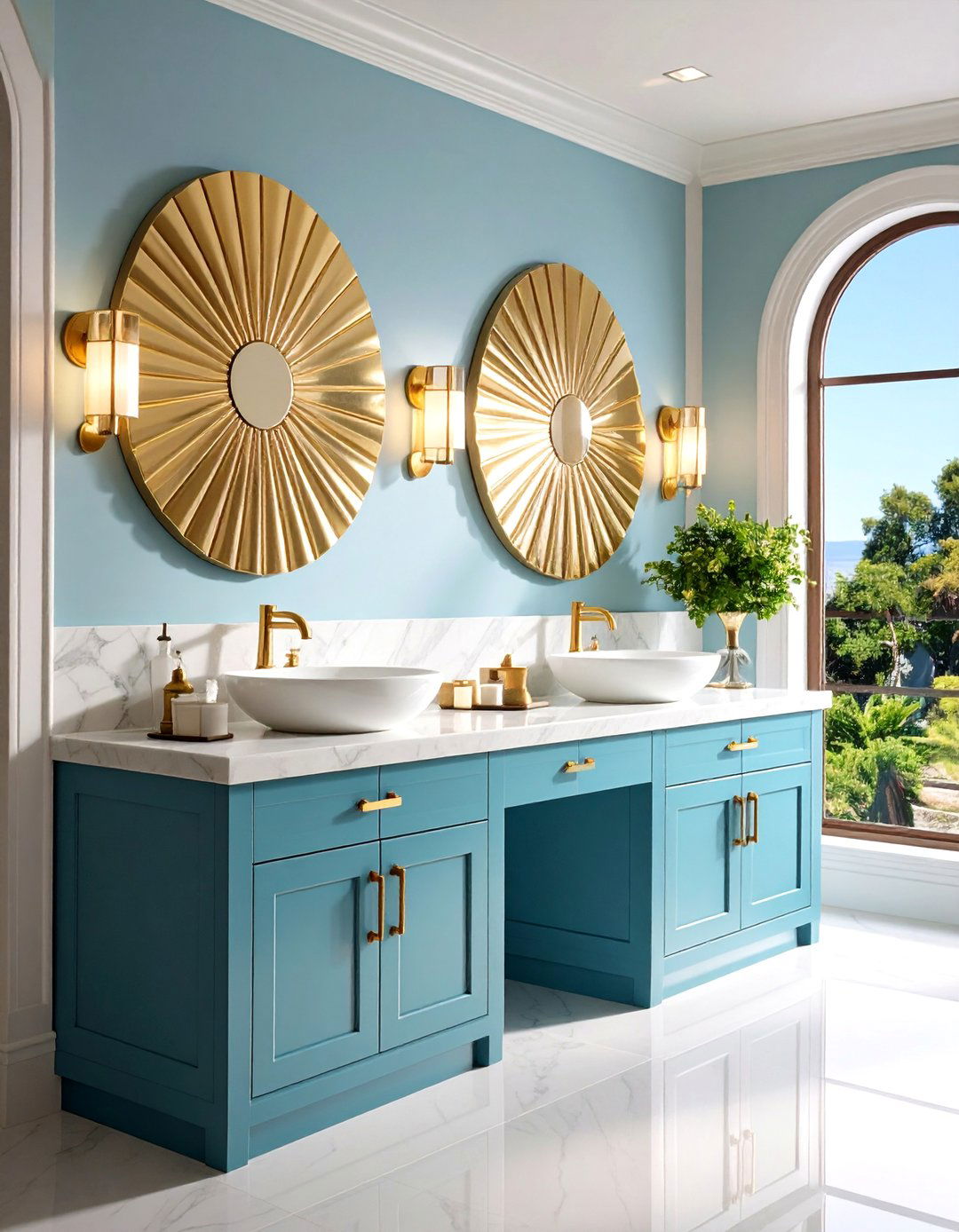
Scallop or fan-shaped bathroom tiles evoke 1920s glamour, especially when rendered in marble or high-gloss porcelain that amplifies each curve. Lay them “scale” side up for a classic motif or invert them for a rising-sun effect above a vanity. Because these shapes create many small joints, use a rapid-set grout to avoid slump. Accentuate with fluted glass sconces and brass tapware to complete the period touch.
18. Seafoam Subway Tiles Channel Coastal Calm
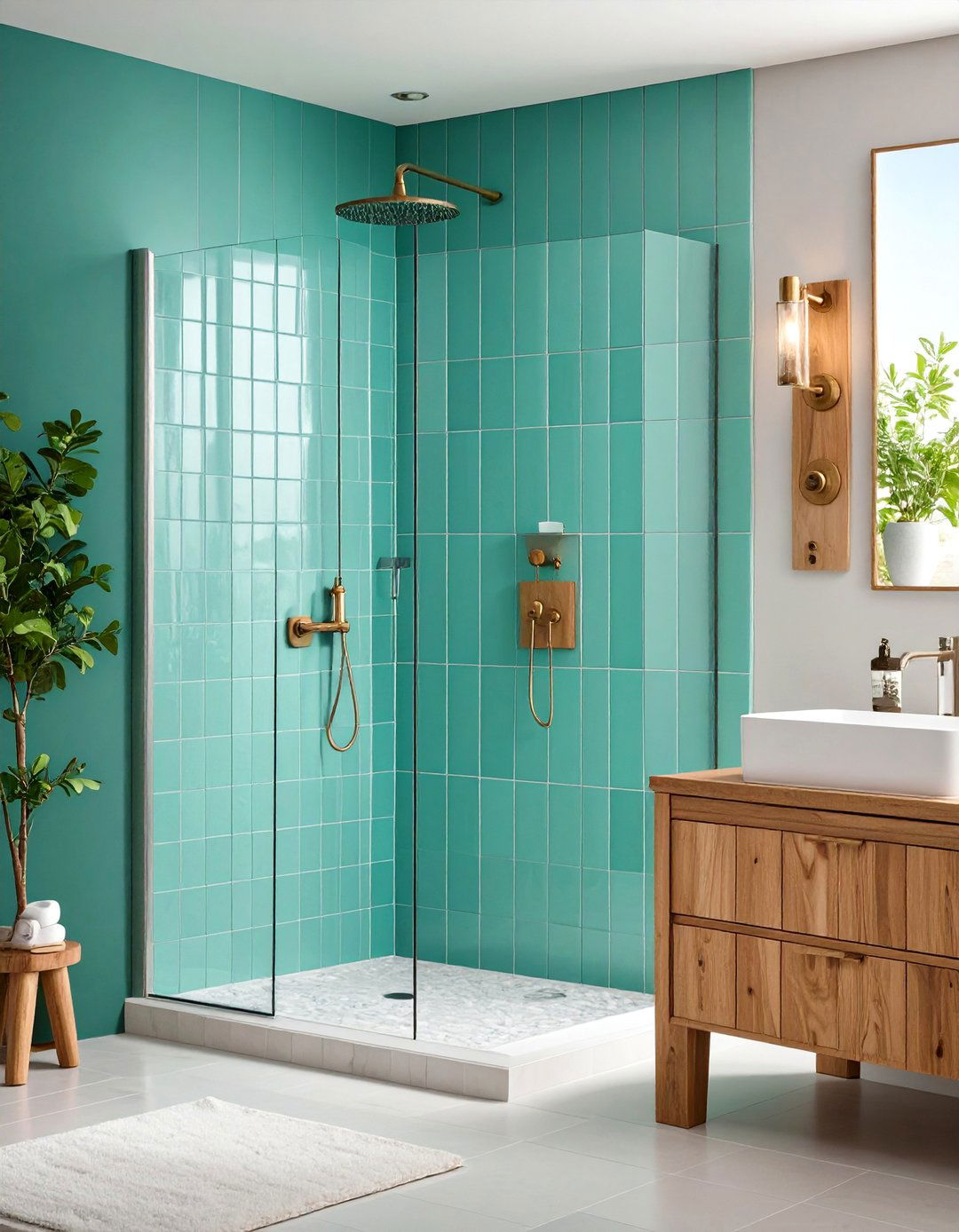
Soft sea-green subway tiles glazed with a hint of iridescence recall sunlit coves and instantly relax the mind. Stack them vertically in a shower to mimic falling water or alternate glossy and satin variants for subtle texture. Keep accessories woven and natural—jute baskets, driftwood hooks—to strengthen the coastal narrative without kitsch.
19. White Subway Tile With Dark Grout Highlights Craftsmanship
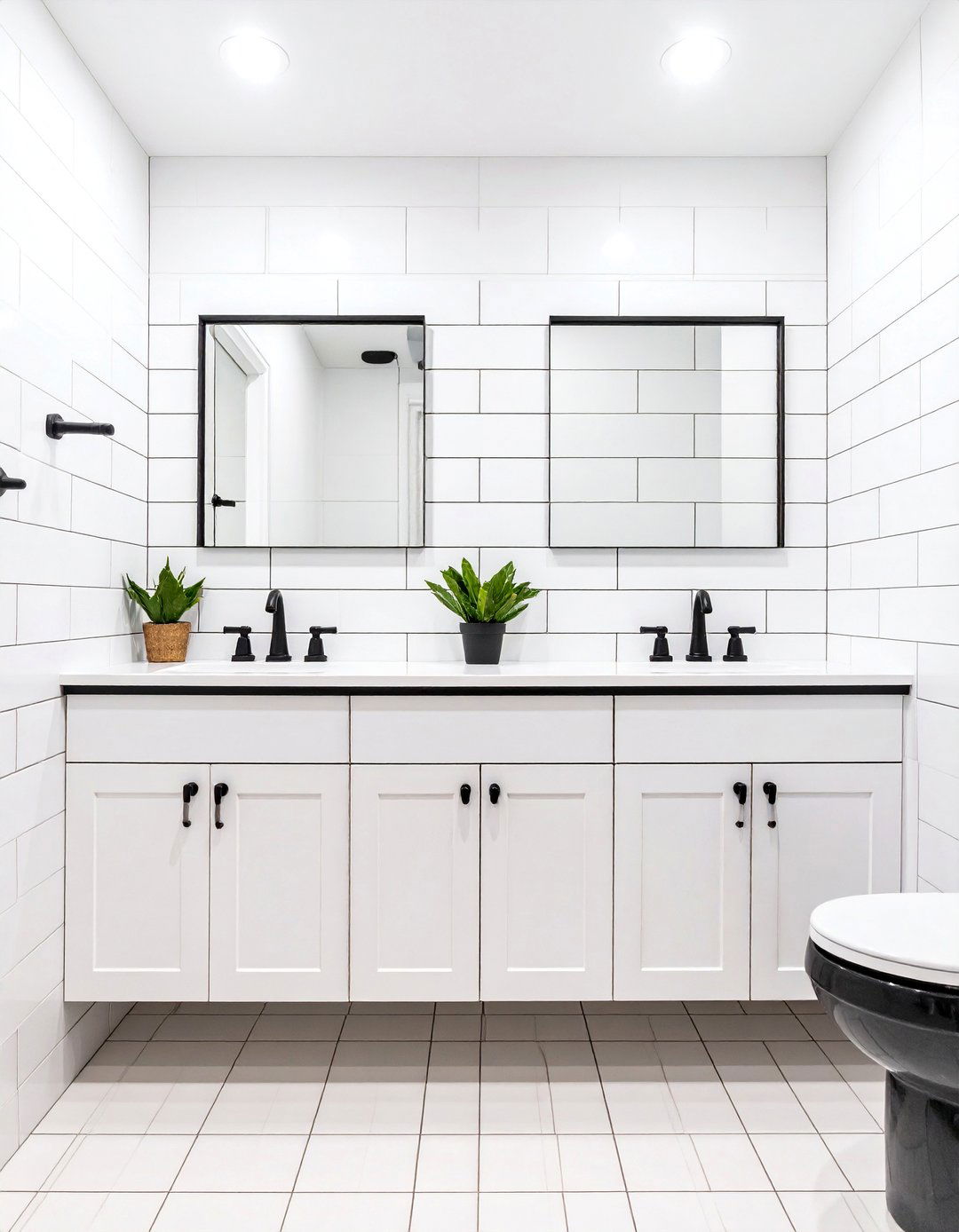
Contrasting grout turns humble white bathroom tile into graphic grid art, drawing attention to meticulous alignments and adding vintage flair. Use charcoal or espresso grout for classic contrast, or muted olive for a softer edge. Seal grout twice; darker pigments can haze adjacent tile if left unprotected. Thin, uniform joints keep the effect tailored rather than rustic, and black fixtures echo lines for cohesion.
20. Self-Cleaning, Antimicrobial Tiles Future-Proof the Bathroom
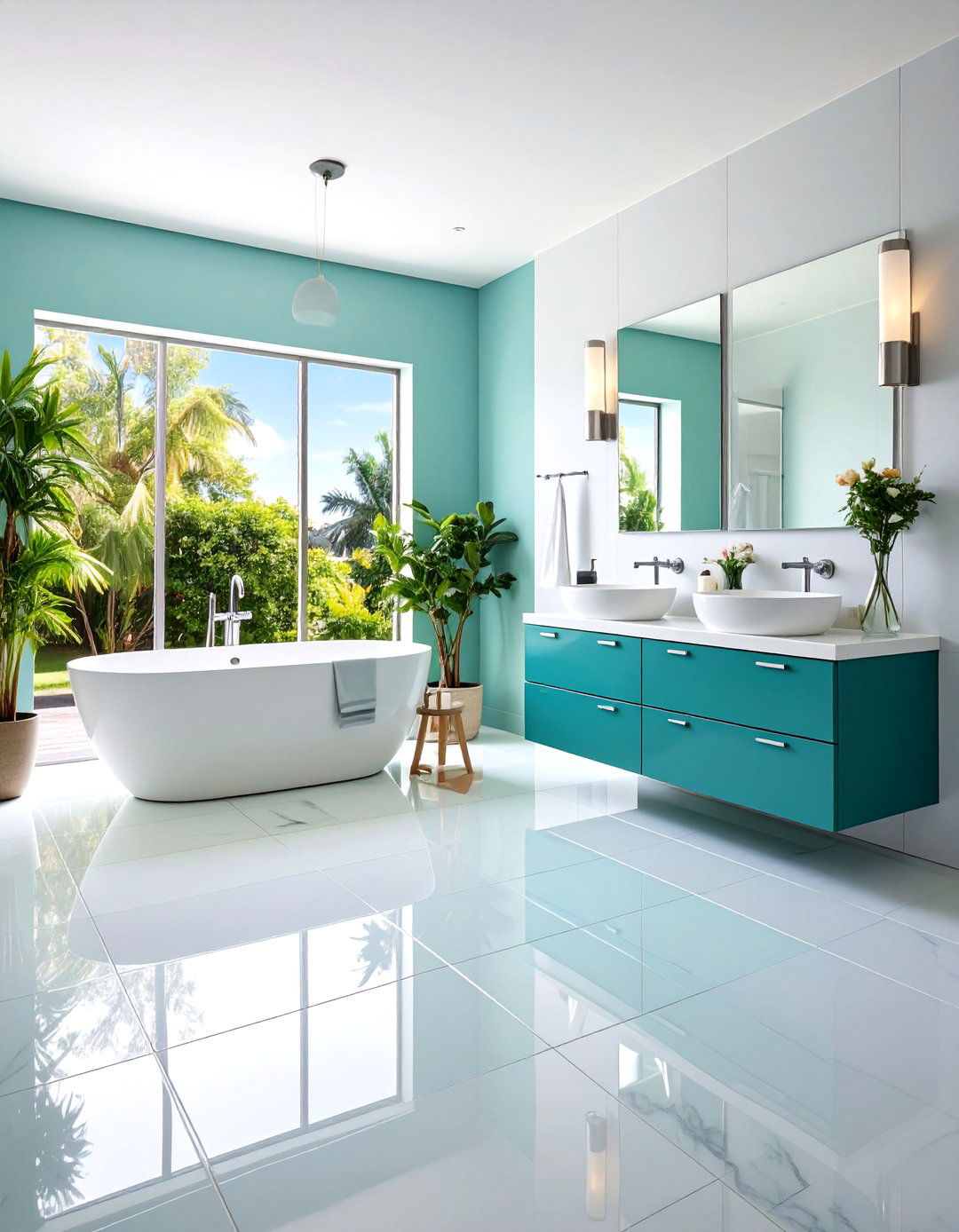
Health-focused homeowners are embracing porcelain or ceramic tiles infused with silver ions or TiO₂ photocatalytic glazes that actively reduce bacteria and mold on bathroom surfaces. These self-cleaning tiles need only light and humidity to trigger their germ-fighting chemistry, cutting bleach use and extending grout longevity. Installation mirrors standard porcelain, but manufacturers recommend epoxy grout for a fully hygienic envelope. Though the upfront cost is higher, reduced maintenance and improved air quality offer long-term payoffs.
Conclusion:
Whether you crave a calm spa retreat, a punchy pattern playground, or a tech-savvy hygiene hub, today’s bathroom tile innovations put that vision within reach. Large formats minimize cleaning, sustainable mosaics respect the planet, tactile surfaces add safety, and antimicrobial glazes guard health—all while expressing personal style in color, shape, and shine. Mix and match the ideas that resonate most, and your next remodel will deliver beauty you can live with comfortably for years to come.


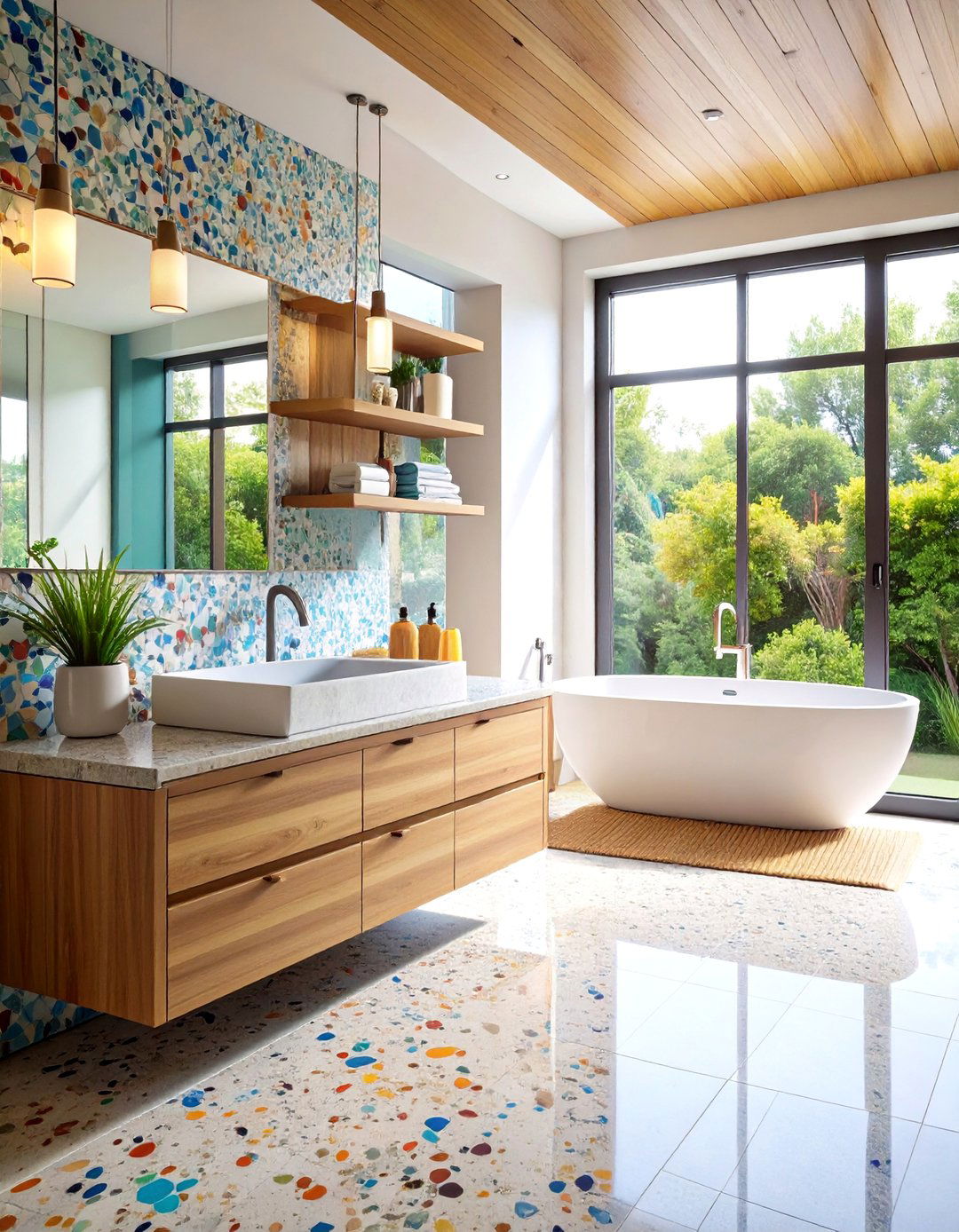
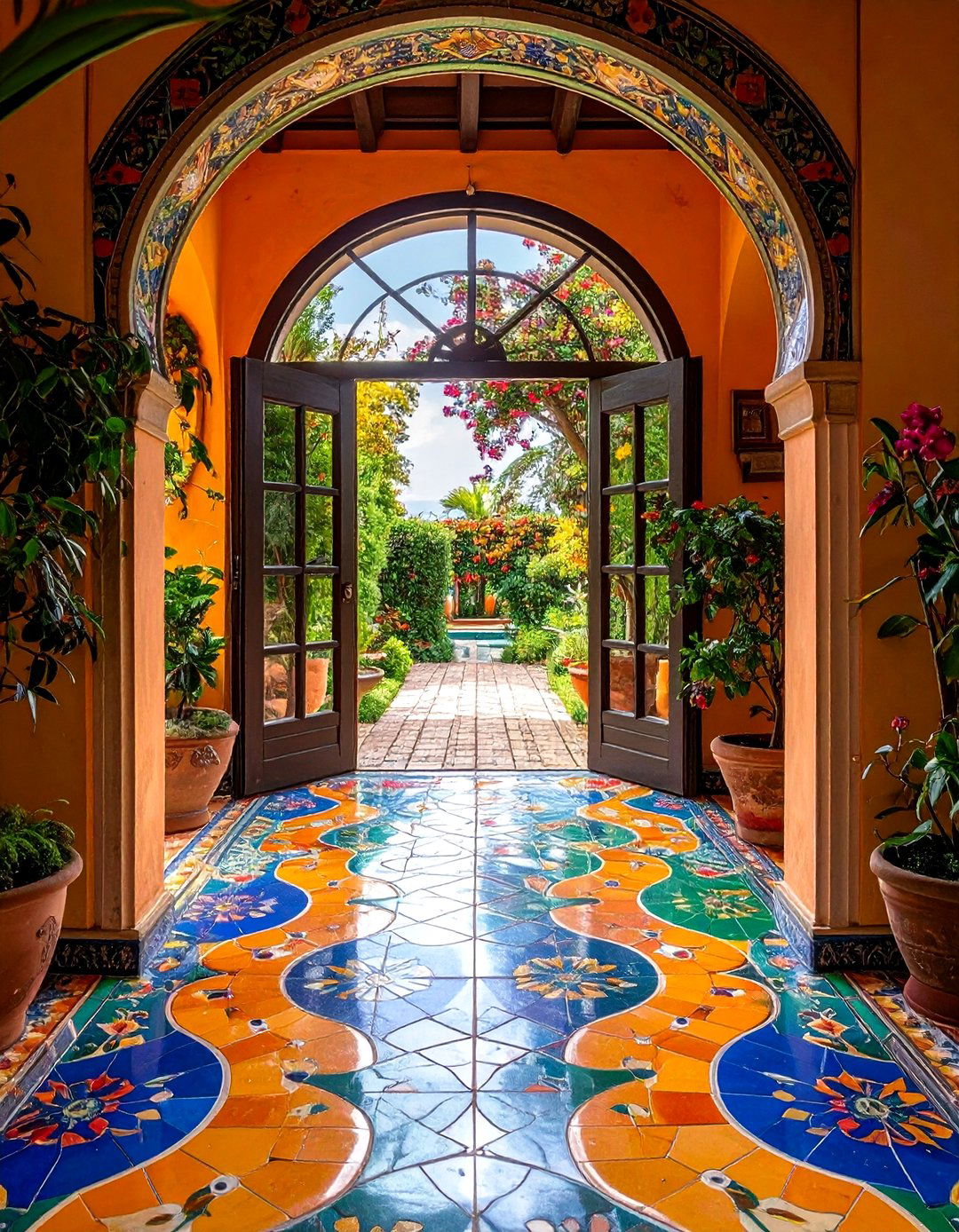
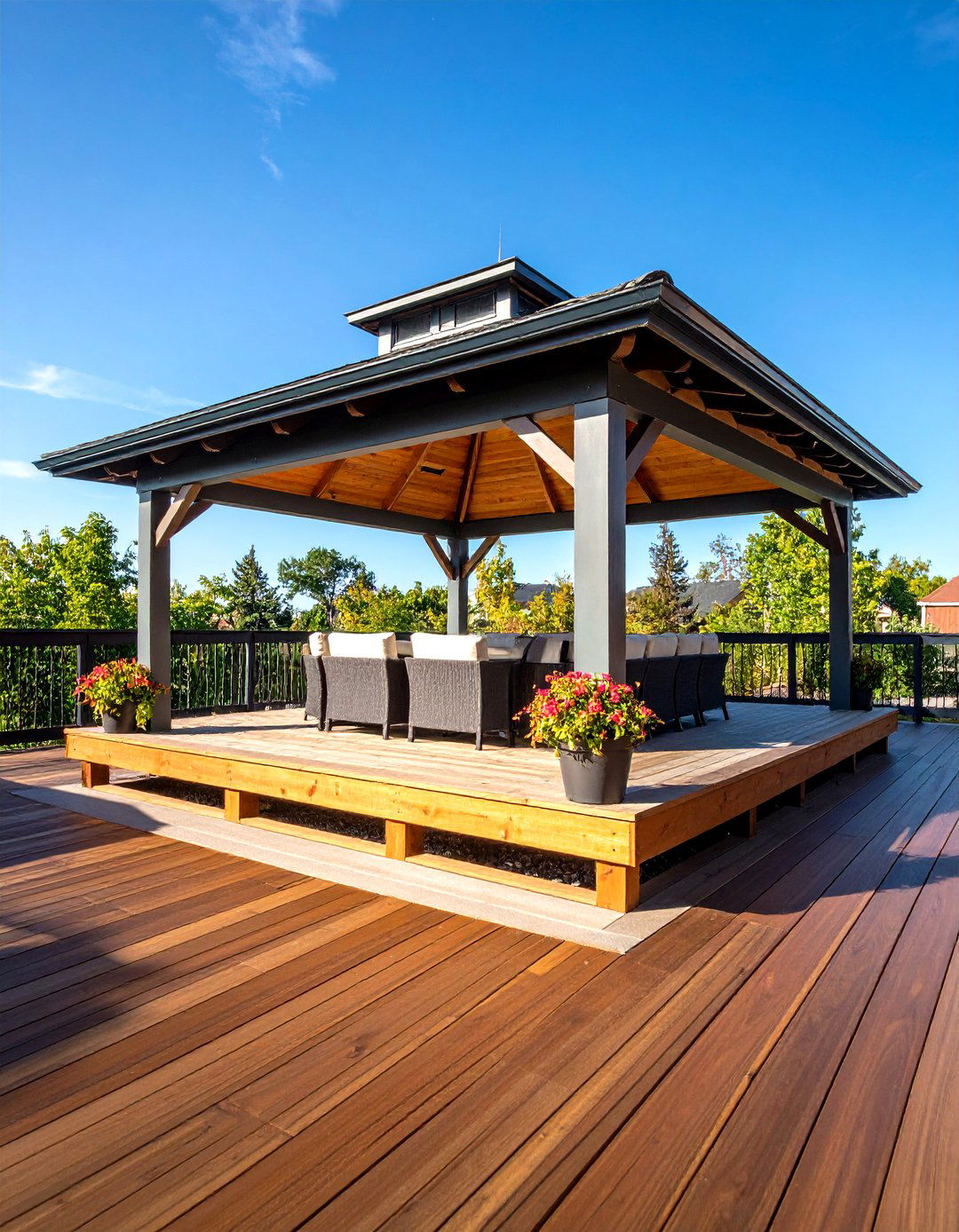
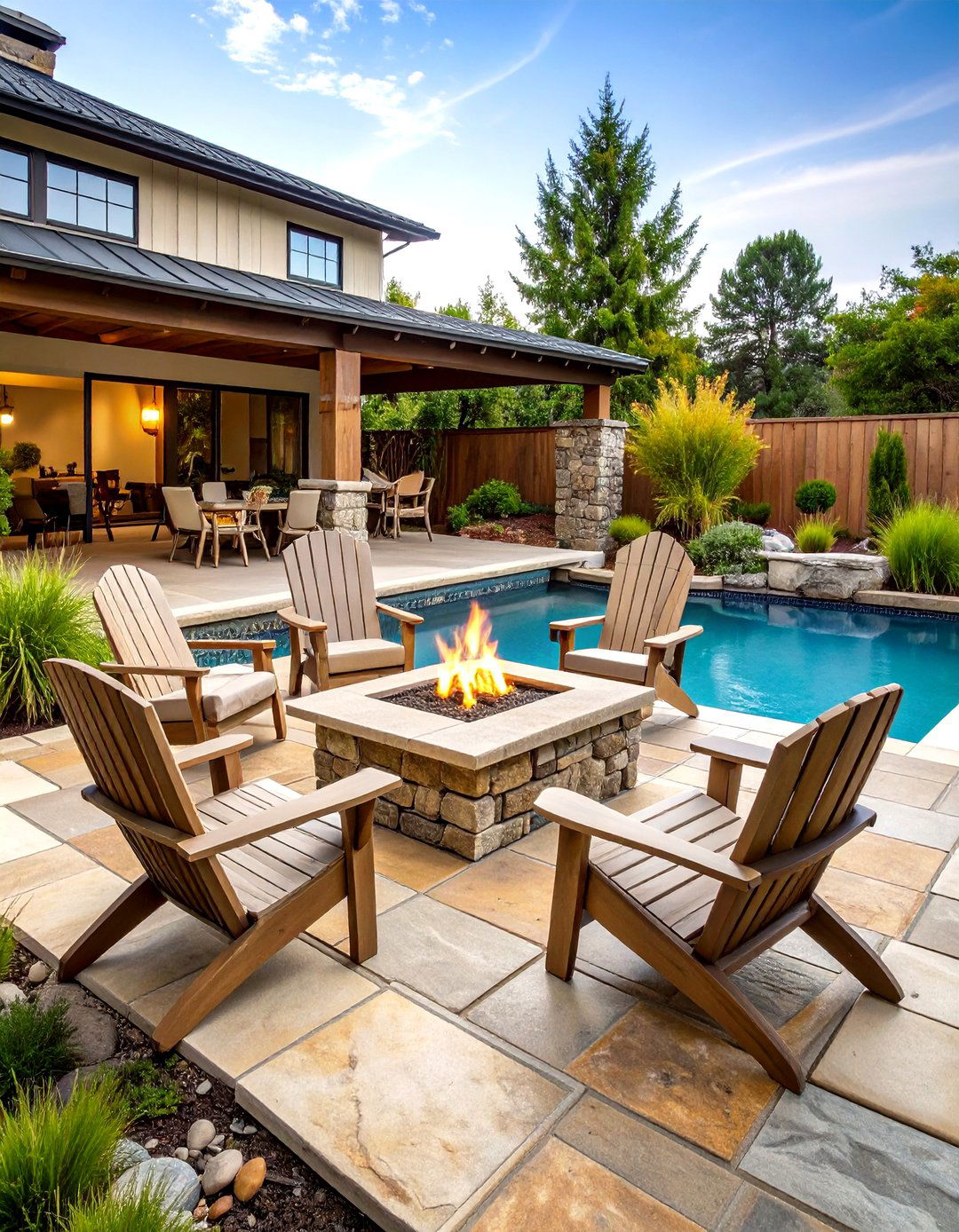
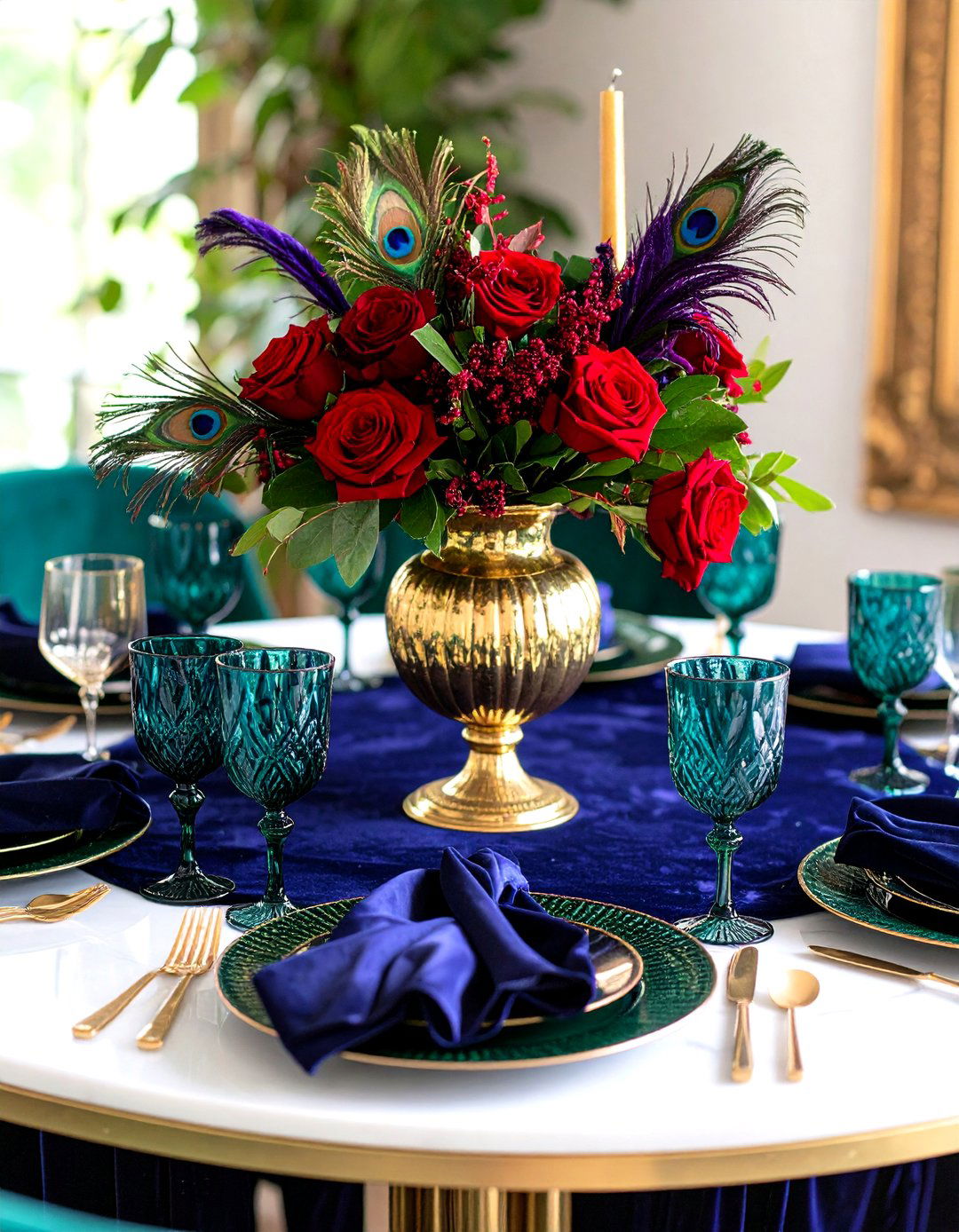
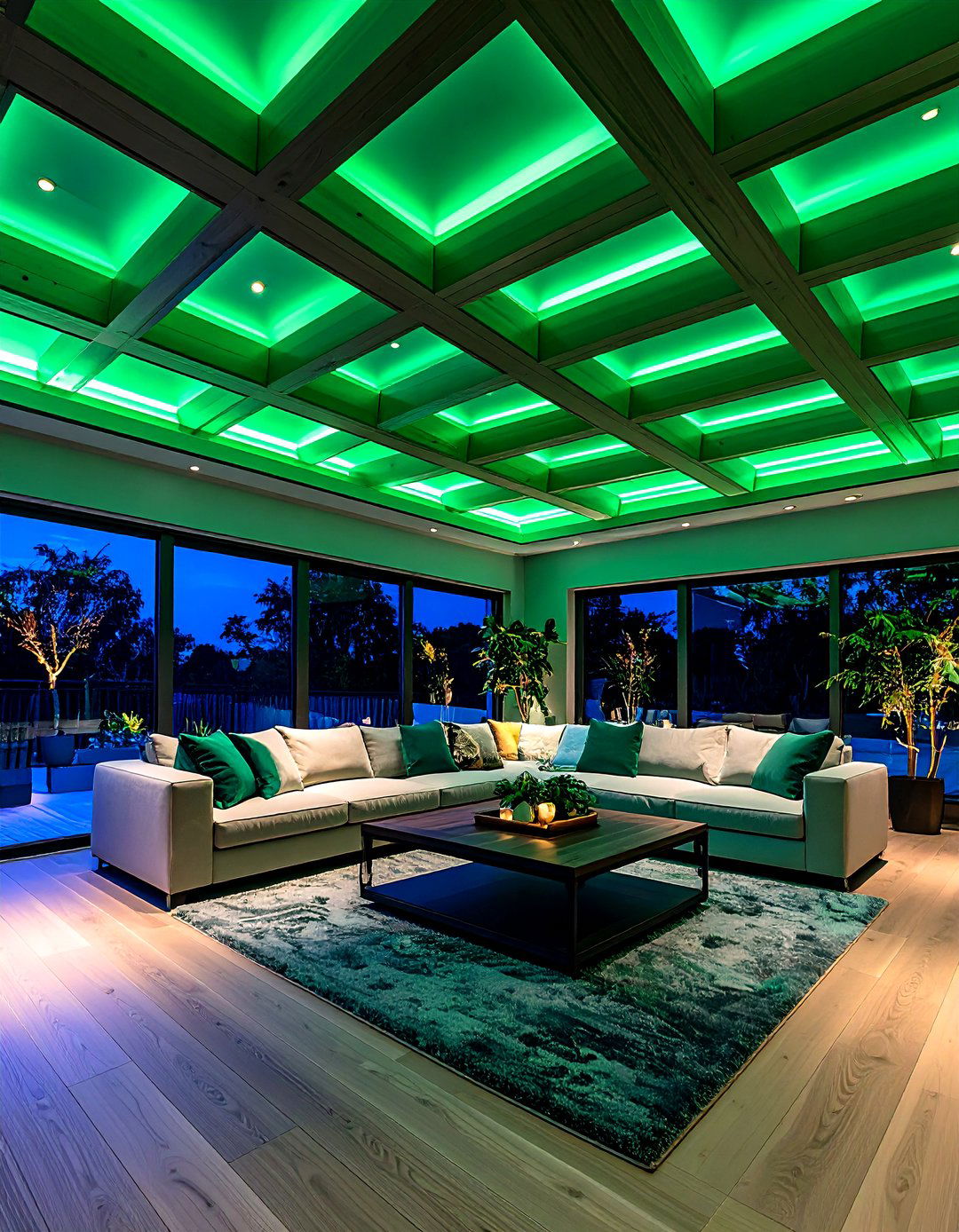
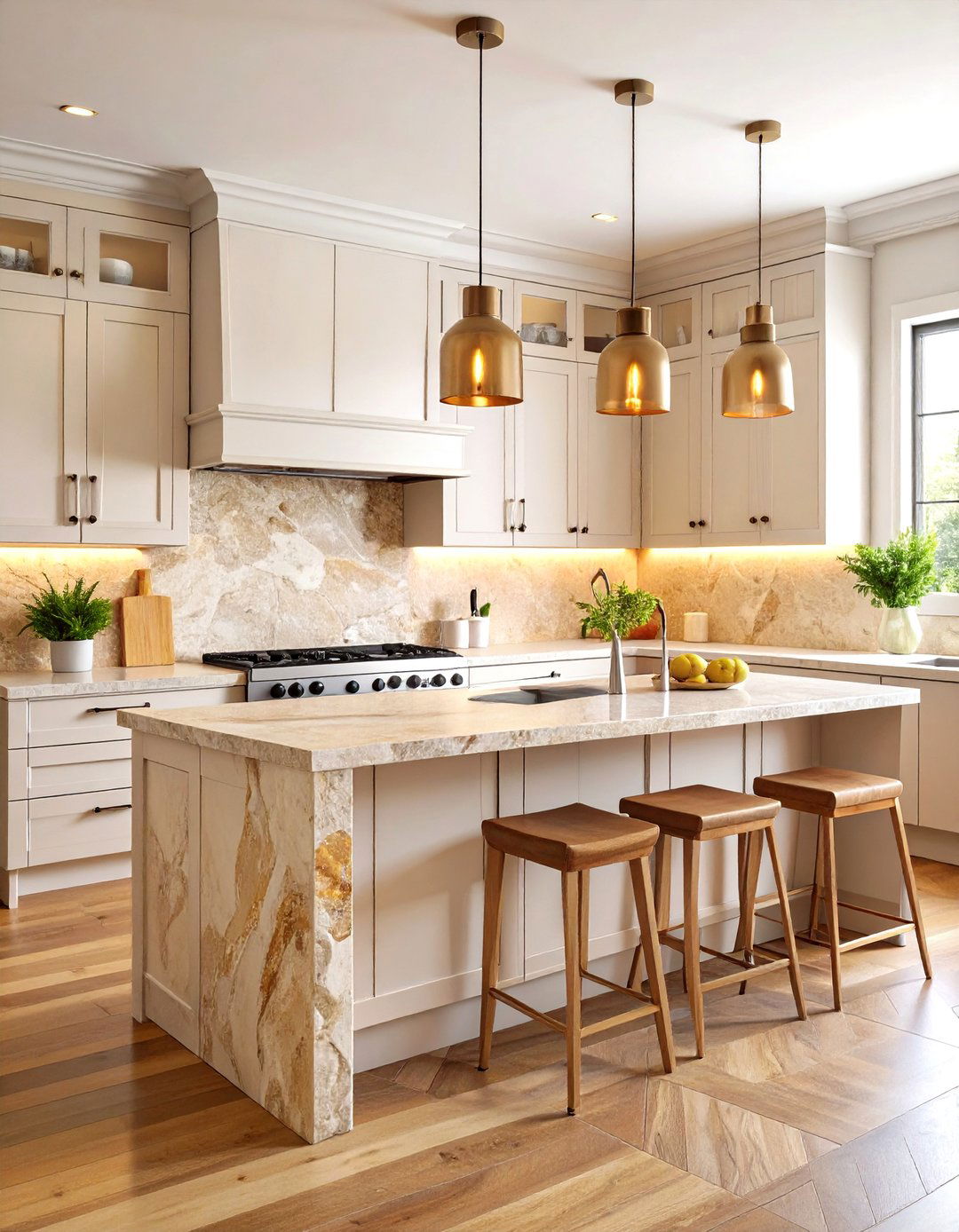
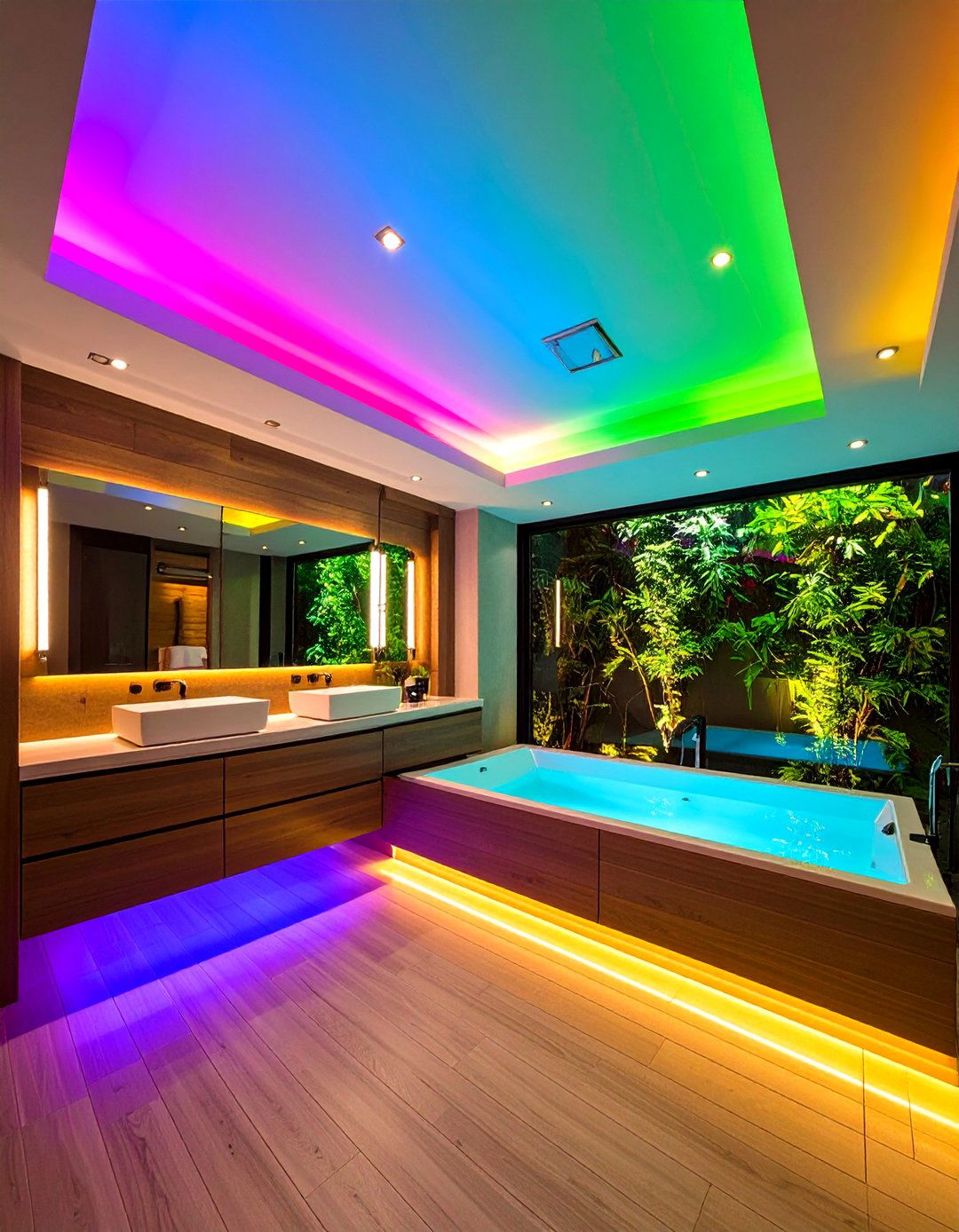
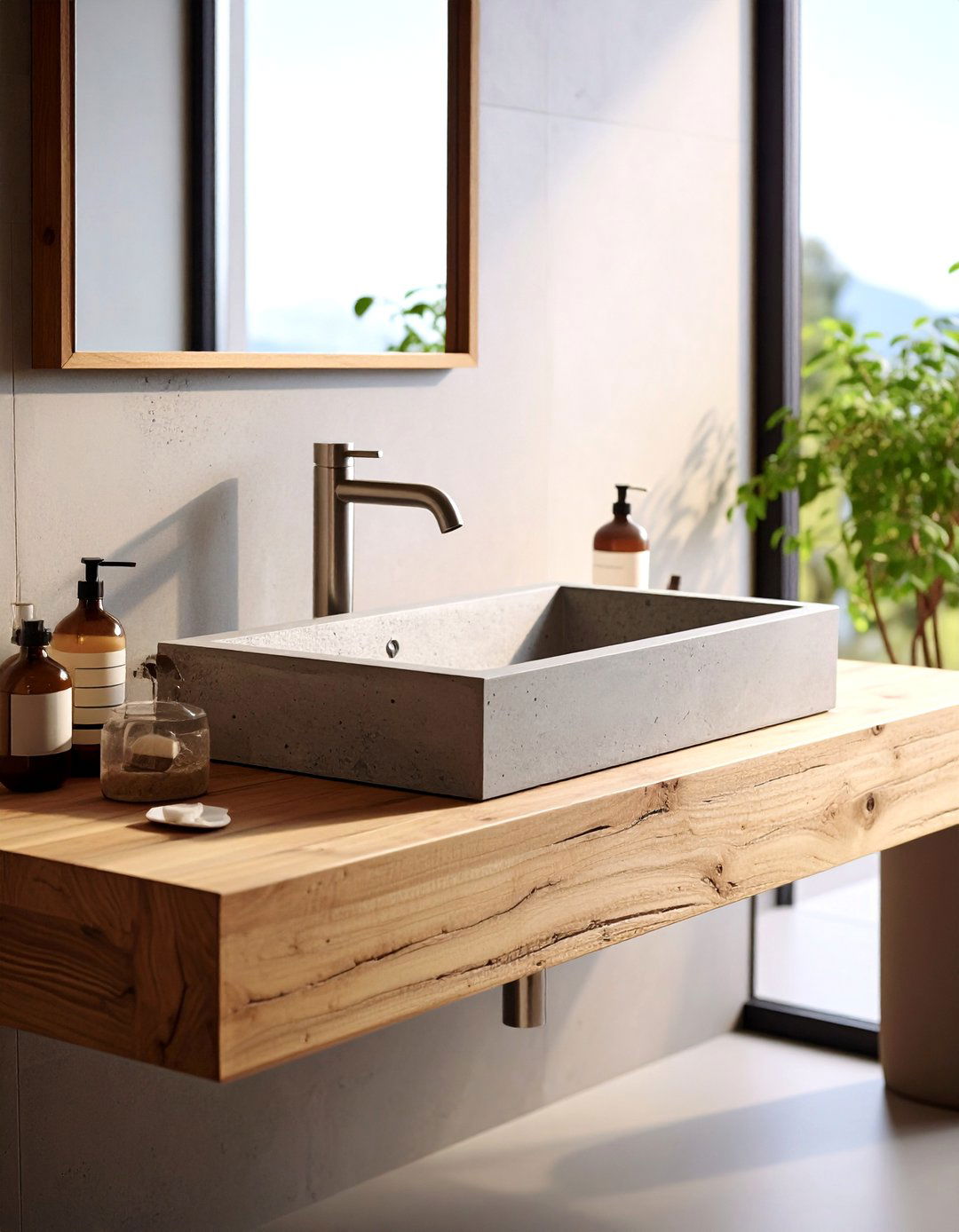
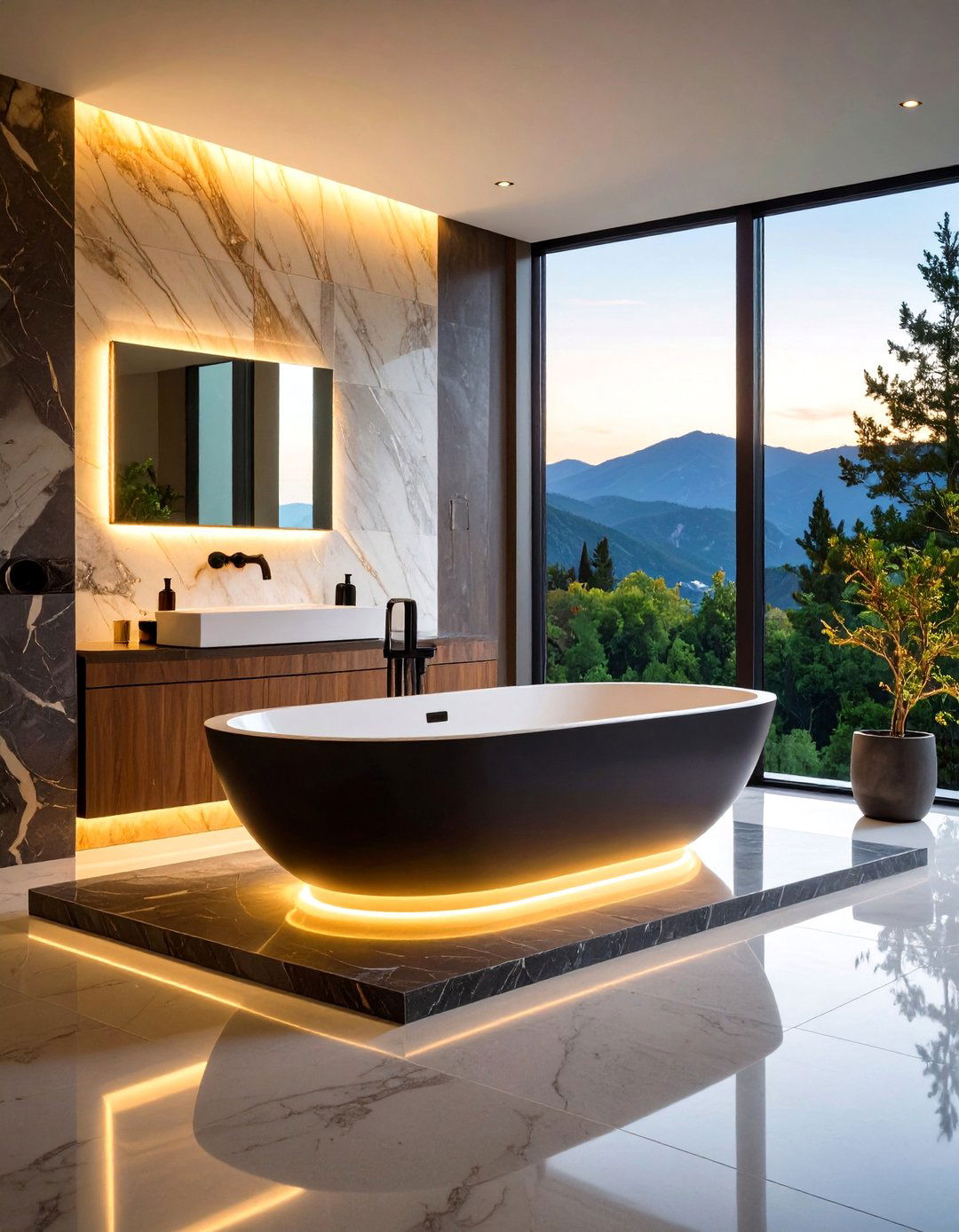
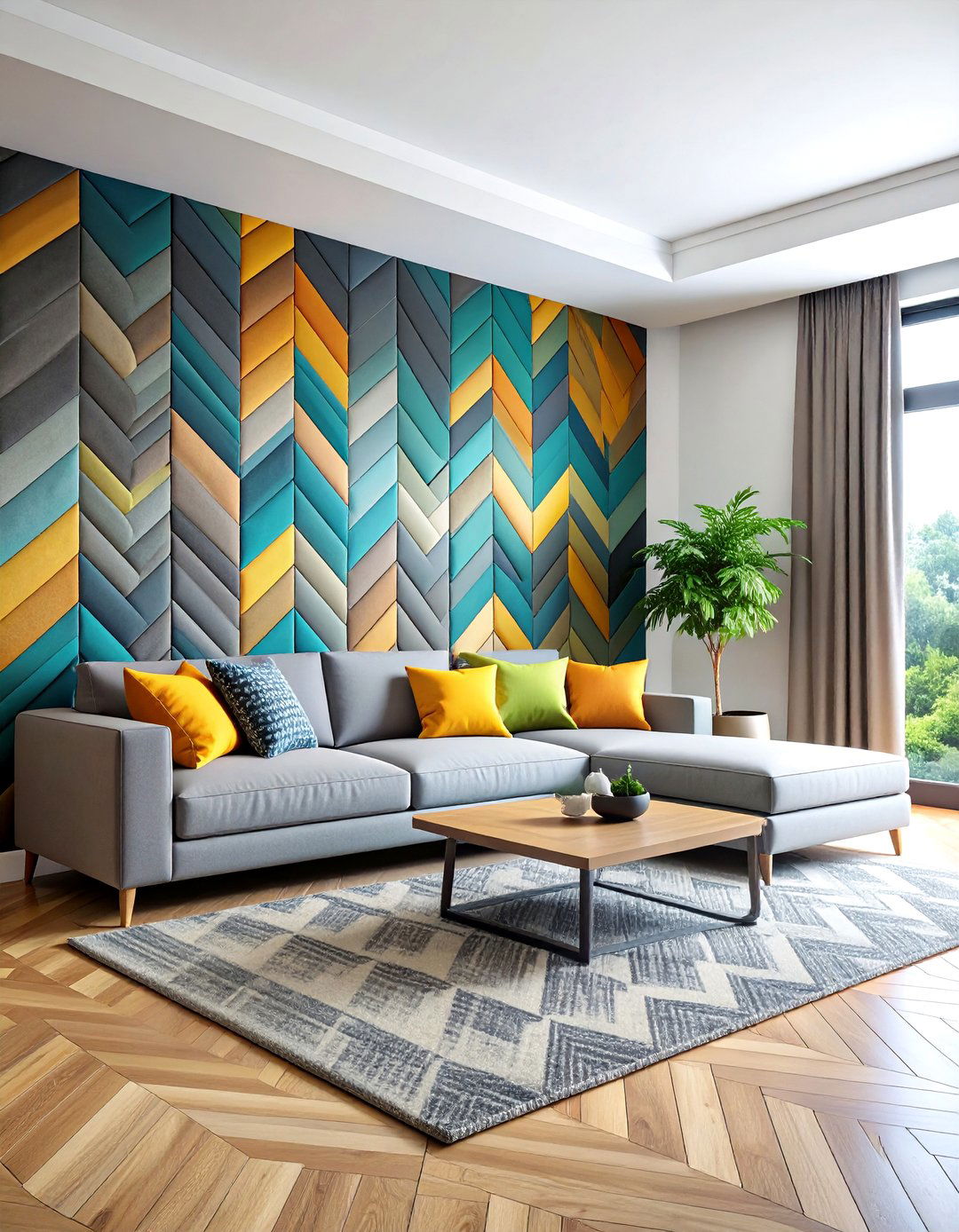
Leave a Reply